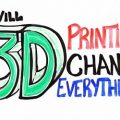在PTE中,无论是Summarise Spoken Text 还是 Re-tell Lecture的考题大都是从真实的讲座或者演讲中截取的,中间经常经常夹杂很多不同的环境音.很多同学都反映有时未必是听不懂,而是听不到. 鉴于此,墨尔本文波雅思PTE专门为大家总结了真实讲座的PTE练习音频,相比新闻音频来说,整体更加接近PTE考试的真题,内容方面,我们也会为大家提供考试中存在的近似题,最近我们会持续更新,敬请期待!
Another thing we emphasize in the report as we see this huge difference between the Millennium Development Goals between rural and urban areas. Any principle of course the millennium development goal I show basic; I’m not talking about having access to university or even secondary schooling in the rural ares. We talk purely about completion of primary schooling that we talk about maternal health of mothers not dying when they’re delivering kids in rural ares vs. suburban area. Two principles these are goals we should achieve across geographical space. But very often but we see that their resource constraints and governments particularly in a much poorer country is ur cannot necessarily deal with everything at the same time. So it means that what is our constraints priorities have to be set, and one has a sequence runs interventions and bonds expenditure programs. So in the reports we are saying if you are still very low urbanized country or region, like for example sub-saharan Africa, then maybe you should focus on like capabling people with those skills so they can use in urban areas but also in rural areas or vice versa. So get people healthy, get people educated first so that if they can be more productive rural citizens but also if they would decide to move to urban areas they are because they expect better jobs so they also better-educated have potentially the skills to participate in a more manufacture-oriented society like urban areas of them are. If you already much more urbanized, then you might actually really want to focus on all the entities. If you are more urbanized, you are richer and you have much less of resource constraints related to these very basic development outcomes at the end…





